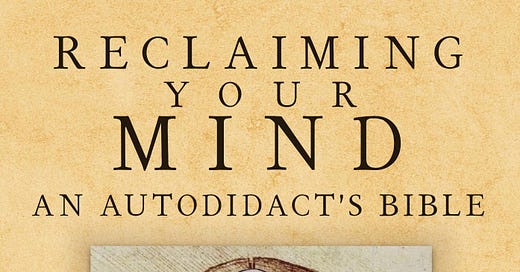This is the eleventh installment of the serial of my forthcoming book Reclaiming Your Mind: An Autodidact’s Bible. As with other installments, part of it is behind the paywall. Become one of my supporters to get the whole thing.
Catch up on earlier installments here:
#1, #2, #3, #4, #5, #6, #7, #8, #9, #10
If your email client chokes on this post, find the whole thing at http://jdanielsawyer.substack.com
Continuing with our discussion of ascertaining structure as an aid to understanding…
The Universal Acid Test
All that may be well and good, but any attempt to discern structure will readily run into two practical problems:
First, how do you make the leap from a collection of observations to an inference about the relationship between them? How do you tell which bits are relevant to each other, and which bits are superfluous?
Second, how do you tell if you’re perceiving a real bit of structure, instead of just inventing relationships that happen to fit your preconceived notion of how things ought to work?
These are not trivial problems. On the contrary, they are some of the deepest problems in philosophy (particularly in epistemology and ethics).
For example, the maxim that, in ethics, one cannot derive an “ought” from an “is,” is rooted in the first of these problems: Just because you have a pile of observations doesn’t mean you know how they’re related—and, worse still, even if you know how they’re related, you don’t necessarily know what parts of that relationship you should care about.
In other words, the maxim contends that without a rationale external to the facts in question, one can not judge which course of action is the correct one in any given situation.
Let’s say my brother and I had a dispute over whose turn it was to walk the dog. What would be the correct tack to take? Should I fight to walk the dog, or to get out of it?
It would depend on what it is I wanted out of the situation.
I might fight to get out of the chore if my favorite TV show were coming on, if I had a date I didn’t want to miss, if I resented my brother for shoveling his chore load off on me and I wanted to even the score, if I just wanted more free time in my bedroom without my brother hanging around and bothering me, or if I hated the dog.
On the other hand, I might fight for the right to walk the dog if I wanted to command more of the dog’s loyalty, if I liked walking, if I wanted the exercise, if I enjoyed the dog’s company, if I wanted to attract female attention (women being more likely to flirt with men who are taking care of animals or babies), or if I wanted to hurt my brother’s feelings by making the dog like me more than it liked him.
So, the ethical quandary would be in deciding which of the motivations was the noble one, and taking action based on that.
In this sense, it is impossible to easily derive what one ought to do from the facts on the ground. You can’t make decisions about meaning and morals based on facts alone—but, as we’ve seen in the previous section, structure is meaning, so understanding structure might actually help us make ethical inferences, and I believe that this is, in fact, what we do.
Our ethical systems and instincts are based on our understanding of the structure of the world (in however localized a sense) and on the innate structure of our consciousness.




